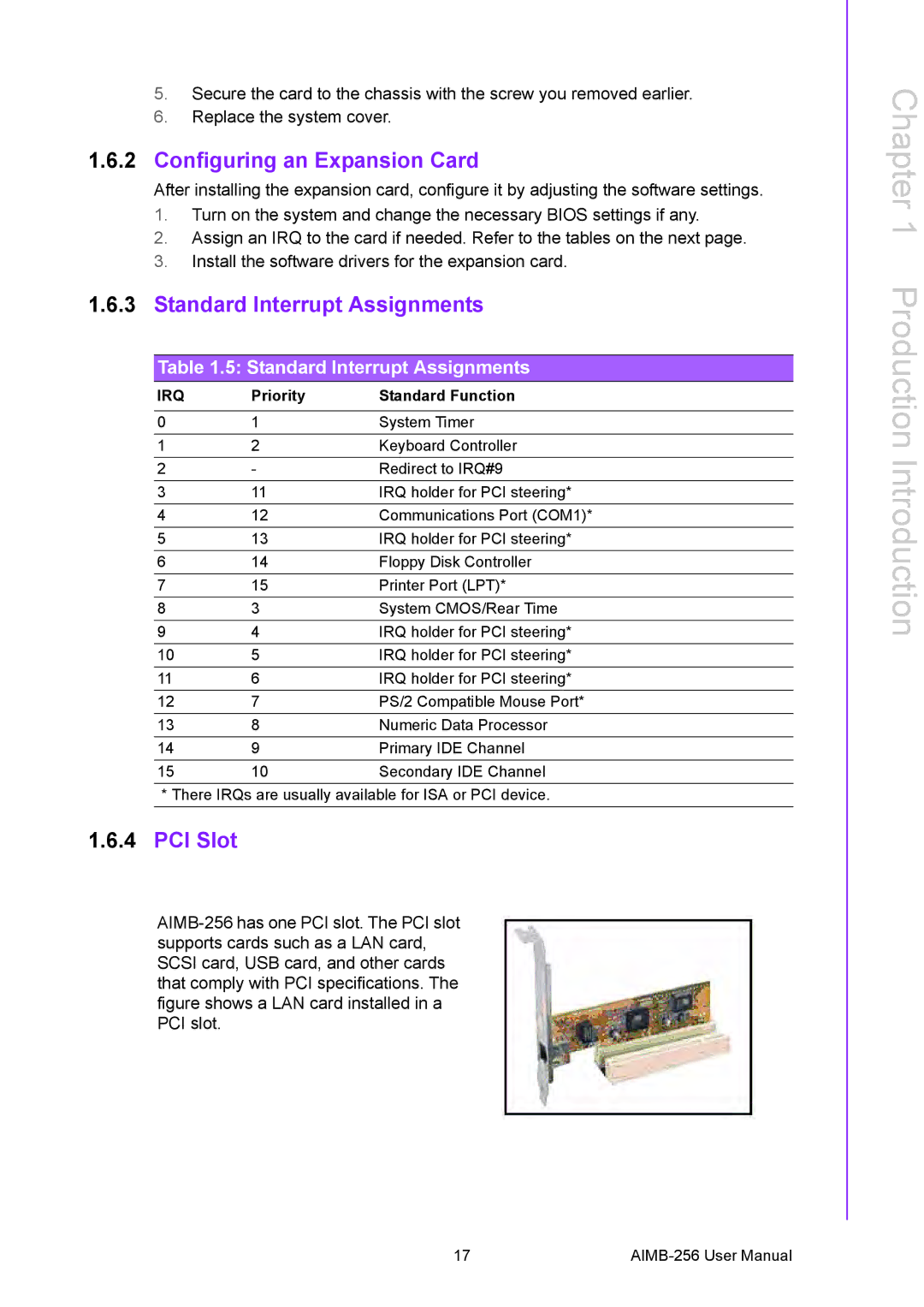
5.Secure the card to the chassis with the screw you removed earlier.
6.Replace the system cover.
1.6.2Configuring an Expansion Card
After installing the expansion card, configure it by adjusting the software settings.
1.Turn on the system and change the necessary BIOS settings if any.
2.Assign an IRQ to the card if needed. Refer to the tables on the next page.
3.Install the software drivers for the expansion card.
1.6.3Standard Interrupt Assignments
Table 1.5: Standard Interrupt Assignments
IRQ | Priority | Standard Function |
|
|
|
0 | 1 | System Timer |
1 | 2 | Keyboard Controller |
2 | - | Redirect to IRQ#9 |
3 | 11 | IRQ holder for PCI steering* |
4 | 12 | Communications Port (COM1)* |
5 | 13 | IRQ holder for PCI steering* |
6 | 14 | Floppy Disk Controller |
7 | 15 | Printer Port (LPT)* |
8 | 3 | System CMOS/Rear Time |
9 | 4 | IRQ holder for PCI steering* |
10 | 5 | IRQ holder for PCI steering* |
11 | 6 | IRQ holder for PCI steering* |
12 | 7 | PS/2 Compatible Mouse Port* |
13 | 8 | Numeric Data Processor |
14 | 9 | Primary IDE Channel |
15 | 10 | Secondary IDE Channel |
*There IRQs are usually available for ISA or PCI device.
1.6.4PCI Slot
Chapter 1 Production Introduction
17 |
